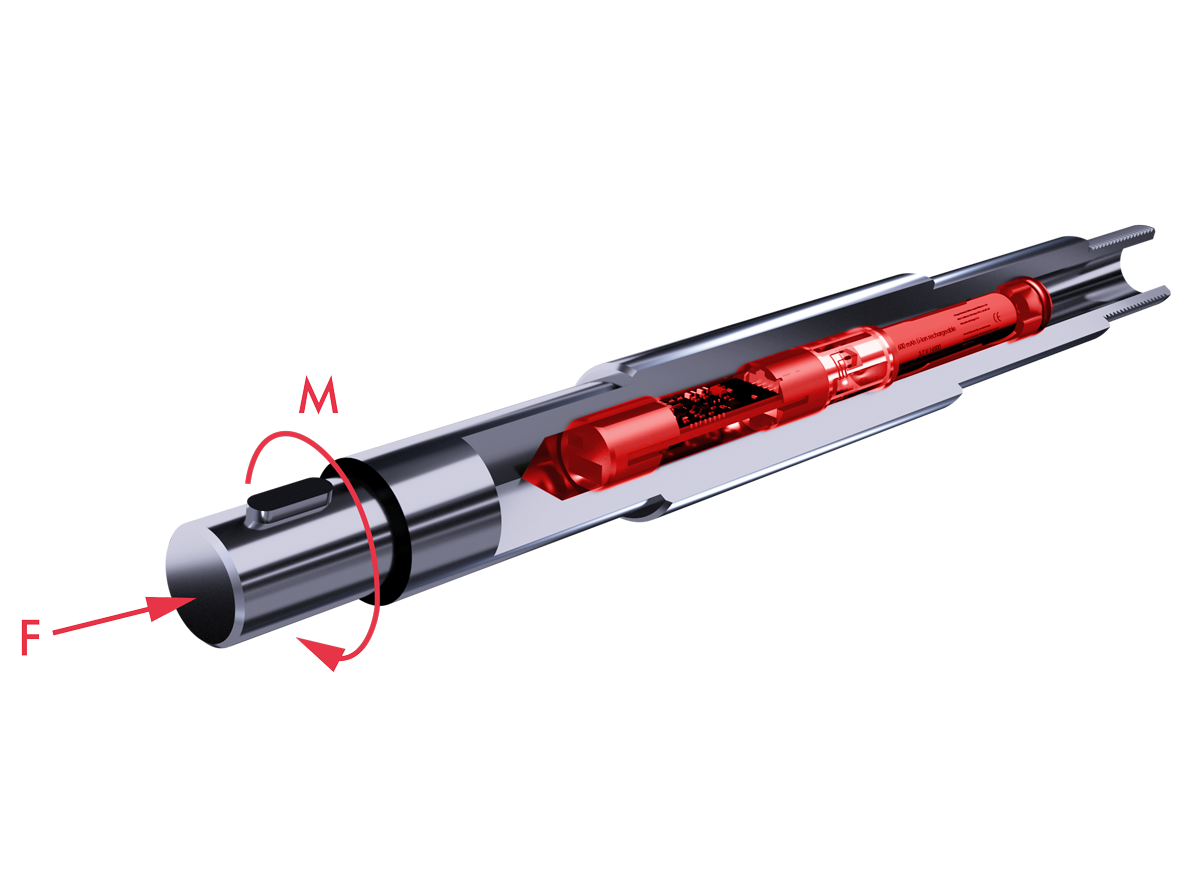Measuring forces and torques on rotating components is often a great challenge, especially when high speeds or environmental influences occur in parallel. Measuring inside a hollow shaft is here a very good alternative to the established, external strain gauge application. We describe the basics of strain gages, advantages and disadvantages and the possibility to measure cost-effectively inside the bore with new technologies.
In industrial drives in mechanical engineering, many rotating components are made up of tubes or hollow shafts. The measurement data from these components are of crucial relevance, since they are machine elements subject to dynamic stress, such as couplings, threaded spindles and cardan shafts.
DMS application as simple & smart solution
The recording of stresses is possible through an application of strain gages (DMS). These can be bonded to the component using cold- or heat-curing adhesives and provide accurate data, which can be further processed in a measuring amplifier thanks to the linear relationship between component and strain gage strain. This makes strain gages an intelligent and simple solution.
Disadvantages of classic DMS application
However, the classic DMS application has a decisive disadvantage: Dynamic machine elements are usually subject to harsh environmental conditions. Lubricating oils, dirt, but also mechanical effects during assembly make the application of strain gages difficult and usually prevent their use. Furthermore, high centrifugal forces act on electronics and cables on rotating shafts.
Strain gauges inside the components
One solution is now to place the strain gages inside the tubes or hollow shafts. The machine element thus protects the sensor from environmental influences and centrifugal forces are reduced by decreasing the distance to the axis of rotation.
As with the strain gage external application, a strain gage pair must be positioned and bonded very precisely. However, the necessary preparation of the bonding area, the application of contact pressure and, in particular, the soldering is hardly possible inside tubes and hollow shafts.
If the diameter is too small (<70 mm), the application of strain gages inside is almost impossible, as this is only possible with a great deal of effort and with the aid of special tools with a prepared strain gage. The economic efficiency is rarely given in these cases.
Precise measurement data from inside the component
However, the advantages of application on the inside cannot be dismissed out of hand. In most cases, the outer surfaces of the machine elements are also effective surfaces and thus cannot be used. Here, for the first time, the possibility arises to obtain precise and direct measurement data. In addition, the lower centrifugal forces and the protection against environmental influences offer great benefits for many companies. This benefit lies above all in improved process monitoring.
coreIN - the integrated sensor solution
The integrated sensor solution from core sensing offers the possibility of correctly and simply recording the load in the component for both small and large internal diameters. In the diameter range from 14 mm (special sizes on request), we offer sensor elements that can be integrated into the inside of the pipe, where they safely and reliably record the loads.
You can find more information about coreIN here:
Alternatively, we are also able to apply DMS from the inside or outside. Both with cold and warm application.
Just contact us!

